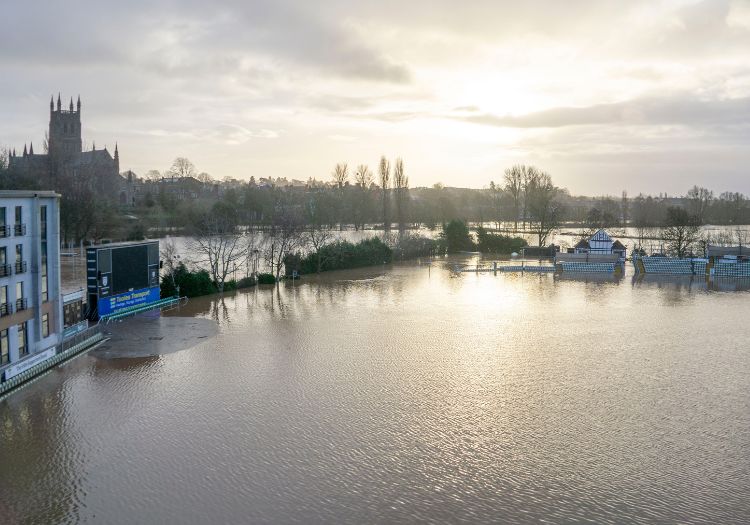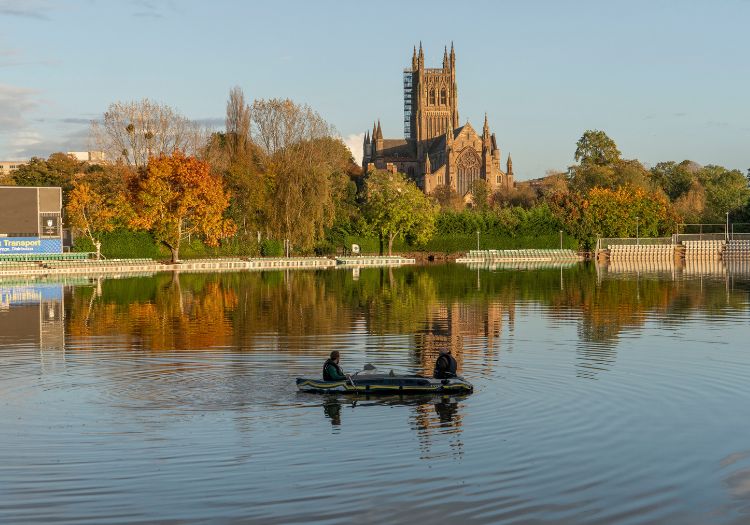NICK FRIEND: If Worcestershire's iconic home ground isn't ready in time to face Durham on April 19 – after a winter of severe flooding – they will play their first two home matches at Kidderminster instead

If Worcestershire are to play their first two home County Championship matches of the season at New Road, they will in all probability take place on their hybrid pitches, The Cricketer understands.
The surfaces, which are effectively turf pitches that have plastic fibres stitched into them, have been gradually eased into the game and since 2019 have been allowed – and widely utilised – in professional white-ball cricket.
Until the upcoming season, their use in first-class cricket had not yet been permitted. But amid unsustainable schedules, which have put relentless pressure on groundstaff, part of the theory is that adding them as an option will ease the strain both on the squares themselves, as well as those who look after them.
Worcestershire's situation is slightly different; the ECB makes allowances to ensure they can play their first two games away from home, such is the annual risk of winter flooding around New Road.
This winter has seen four different floods, which have left the club – led by head groundsperson Stephen Manfield – facing an uphill battle to be ready for April 19, when they are due to face Durham in their first home Division One fixture since 2018.
Manfield's working theory is that, in the immediate term – and faced with a race against time – the grass should grow back stronger and bind better on the hybrids than on the natural pitches.
But speaking to The Cricketer for a wider interview about the challenges presented by this winter, Manfield did offer a caveat: "Until we have the water off and play a four-day game on it, I couldn't say at this point that it's better."

New Road has spent much of this winter submerged (Image: Worcestershire CCC)
For a time, one of the major stumbling blocks with their prospective use in first-class cricket was the perception that they would not deteriorate in the manner that a typical pitch would do, which might in turn lead to matches fizzling out as draws and spinners not necessarily coming into the game, without great rough patches to aim for.
"The square is now made up of anywhere between 48 and 50 per cent silt," added Manfield, on the impact of the flooding.
"A normal cricket square is around 30 per cent between sand, silt and clay. We're already in dangerous levels of that, and if you can't improve or get onto the square and let it just keep on taking hits, eventually it has a huge knock-on."
If New Road hasn't recovered in time for April 19, Worcestershire would likely face Durham – and Somerset a week later – at Kidderminster, the county's regular outground.
Join The Cricketer's brand new Whatsapp channel for the latest breaking news, comment and features - click here to become a member